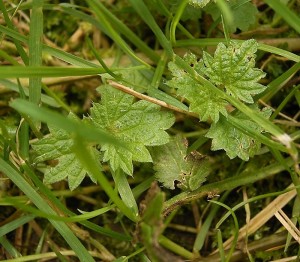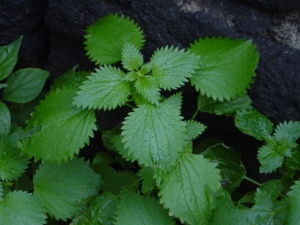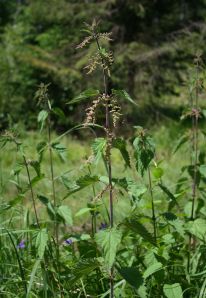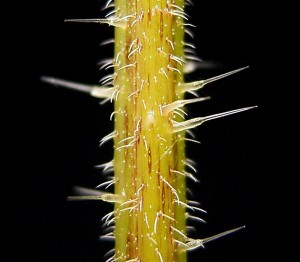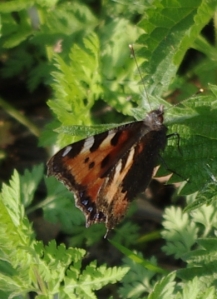Dear pagan readers,
In the last article, I have introduced you to the ”feet of Belus” commonly called Plantago. You have learned that the leaves can be eat and use to heal and calm the pain of all wounds, even insects stings. A truly divine plant offered to us by Belus. Today I’m going to talk about a plant whose harvest is inextricably linked with the use Plantago.
It is again a plant that you can eat the leaves during spring season. It’s also a very powerful plant, so powerful that nature gave it a weapon to protect herself from abusive use. Even if the stings caused by this weapon is really painful, it is also very beneficial at the same time. Also if you like butterflies, you will forgive it for all the pain it caused: No beauty comes without suffering. It is a hotbed for “useful fauna”, including many species of butterflies, beetles and bugs. In Western Europe, it is the mandatory host plant for thirty insects including butterflies (important pollinators, often receding) such as Inachis io, the Vulcan(Vanessa atalanta), the Araschnia levana, the Aglais urticae. It is also the host of moths such as Eurrhypara hortulata. I call this plant the ”helpful heat of Máni”, but it is commonly known as Urtica dioica or Stinging nettle. Once again there’s many reliable sources of information about this plant on the web, so here’s a few links:
http://en.wikipedia.org/wiki/Stinging_nettle
http://www.ageless.co.za/herb-nettle.htm
http://www.blueplanetbiomes.org/stinging_nettle.htm
Once again, I will focus on what is unsaid. Let’s start with the full list of medicinal virtues: antiallergic, anti-anemia, antibacterial, antidiabetic, anti-inflammatory, anti-gout, astringent, depurative, diuretic, galactagogue, hemostatic, nutritive, revulsive, tonic, reduces enlarged prostate. It is a plant with multiple purposes. Like I said, you can eat the leaves during spring, before blooming. The leaves are very rich in proteins, minerals and vitamins A & C. You use it dried(then it loose all his urticant power) , or cooked in soup and stew, especially in potatoes based meals. You can also make and infusion with chamomile and mint. Be careful when you harvest, most people put gloves on because it’s stinging like his name suggest. The irrtation is due to the liquid contained in the base of the bristles. It contain formic acid, histamine, acetylcholine, serotonin and leukotrienes. An interresting fact that the scientist still can’t explain is that some people do not suffer from the Urtica stings, or in some cases, not always. It is said in old tales that if you touch it with a noble intention and fair heart, it won’t hurt you. And I can confirm it myself. Believe it or not, sometimes it is stinging, sometimes it is not.
This is when the Plantago comes in context: you use it to calm the irritation, otherwise the pain will last several days. You can also use Burdock(Arctium) or Curly Dock(Rumex crispus) to calm the irritation, those plants always grow close to Urtica dioica. But the best and unsuspected way to calm the burning is to rub Urtica leaves until the juice gets out. I told you earlier that the stings were beneficial. In fact it heals nothing less than rheumatism and arthritis. You can also make a manure, very rich, every gardeners should have it. It is the perfect fertilizer. His fiber is used for thousands of years to make textile. Clothes made of it were found in many very old tombs. Another interesting purpose is to use the juice of the plant as sealant for little cracks on wood pieces. If you have wooden dishes, it will make it waterproof. Very useful.
In the last paragraph, I mentioned that the ”helpful heat of Máni” is very useful for gardeners. But not only as manure I may add. It is perfect for companionship with all vegetables, fruits, and spices. This plant gives more to the soil than it takes. And it protects it’s surroundings from parasites. It is also a plant that release a lot of heat at night time. If you live in the north, you certainly know that the nights are pretty cold even during summertime. It will then keep your garden from freezing and you will have a much better crop. This is where it gets its name. The helpful heat of Máni!
”όποιος αγαπά, τιμωρεί”
Frederik Blanchett
P.S
If you want to know all the good effects it have on every parts of the body, you can ask me. There is so many uses and concoctions I haven’t mentioned them all. If you have any questions let me know.

